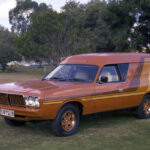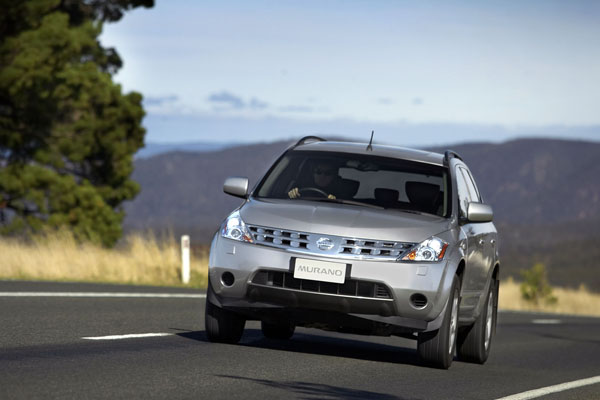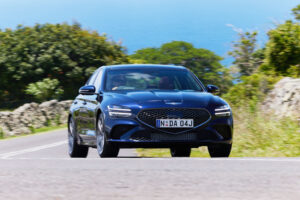
2005 Chrysler 300C
Big, bold and uncompromisingly different, the Chrysler 300C arrived in Australia from the
US of A in November 2005.
From its huge egg-crate grille flanked by twin round headlights, over the almost chop-top
look of the roof, to the very square boot, this Chrysler stands out from all other family cars.
That’s right! ‘family cars’ because that’s what the 300C is – a spacious, practical four-door
sedan and station wagon with good cabin space and a huge boot.
It was aimed at making being a competitor in the Commodore versus Falcon battle, but
didn’t sell in huge numbers as it seems buyers were locked into either Holdens or Fords.
Nothing has changed in the meantime as Holdens and Fords continue to fight it out on
racetracks Australia wide these days.
Originally all were sedans, butch-looking station wagons were introduced in June 2006.
These became pretty popular as they were right out of the ordinary.
The big Chrysler’s 300C matured with the introduction of an all-new model in July 2012,
less gangsta, more mainstream – though you certainly wouldn’t use the ‘sedate’ word to
describe it. Chrysler prefers it to be called the Chrysler 300 rather than 300C, but the ‘C’
continues to be used by Chrysler lovers.
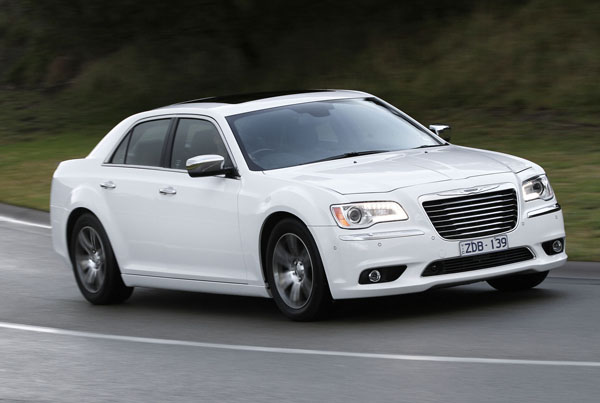
2012 Chrysler 300C
This gen-two Chrysler 300 got a major facelift in July 2015, with a new honeycomb infill
with the Chrysler wing badge in the centre, rather than at the top of the grille. There are
also new LED foglamps and daytime running lights. Changes to the rear saw a new fascia
design and LED taillights. There were four new wheel designs in either 18 or 20-inch.
The 2015 came only as a sedan body and petrol engines. The four variants are 300, 300
Luxury, 300 SRT Core and 300 SRT.
It comes as no surprise that 300C owners do major customisation to the machines, with
huge wheels with ultra low-profile tyres being featured on many.
The 300C has good legroom, headroom and shoulder space for four adults, but interior
volume isn’t as good as that of Commodore and Falcon. While there’s sufficient width in
the centre of the rear seat for adults but the transmission tunnel steals a lot of space.
There’s a huge boot in the sedan that’s well shaped so that it can manage bulky items.
The rear-seat backrest can be folded down to permit long loads to be carried. The wagon’s
luggage area is reasonably large, but still not as good as in the Ford and Holden.
These are big cars and the view out isn’t all that good. Which isn’t too bad for driving, but
they can be a hassle in tight carparks. Rear parking sensors are very welcome.
Ride comfort is good but handling may prove rather soft for keen drivers. The ultra-hot
300C SRT8 is much better if you prefer fanging to comfortable cruising.
There are V6 petrol and V6 turbo-diesel engines which are often chosen by hire car and
limo operators.
The 300C’s big V8 petrol engines may be slightly old fashioned in that they are pushrod,
two-valve units but their sheer size gives them plenty of grunt. And they do like a drink…
However, if you drive them sensibly, they aren’t too bad.
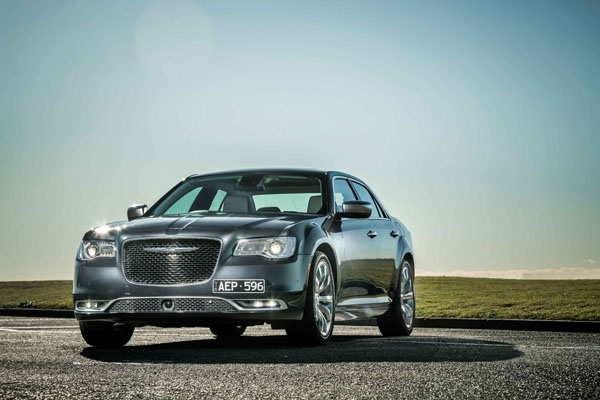
2015 Chrysler 300C
If the 5.7 litres of the first 300C V8s isn’t enough then go for a 6.1-litre SRT (Sports &
Racing Technology) version. Not only do you get more grunt, but also a sports chassis to
further increase driving pleasure. The V8 engine was lifted to 6.4 litres in the new 2012
SRT8.
A lower cost SRT called the SRT Core was introduced midway through 2013. It retains the
sporty features, but has cloth trim instead of leather; a basic audio system with six
speakers not nineteen; standard cruise control is; and standard, not adaptive suspension
damping.
Chrysler is reasonably well represented in Australia, most dealerships are in metro areas.
Chrysler was connected with Mercedes-Benz for a while, these days it’s controlled by Fiat.
You may find a crossover in technical knowledge of the European marques at some
dealerships.
Spare parts availability is generally okay, prices are higher than average for the family car
class, but not outrageously so.
Underbonnet space is very good and amateur mechanics can do quite a bit of work due to
the simple layout and components.
Insurance is moderately priced. Some companies charge more for the SRT8, but there’s a
fair bit of difference from company to company in these sporting variants.
WHAT TO LOOK FOR
Make sure the engine starts easily. The V8s will have a slightly lumpy idle, but if a V6
petrol or diesel doesn’t idle properly there could be problems.
Automatic transmissions should be silky smooth in operation in all but very hard driving.
A Chrysler 300C that has been customised to the max may have been driven hard, though
many are used only as look-at-me cruisers.
Lowered suspension and/or huge wheels may have led to a Chrysler 300 crunching on
kerbs or bottoming on speed bumps. If unsure, get the car up on a hoist.
Big numbers on the clock may mean a used 300C has lived the limo life. However, they
are usually driven sensibly and serviced strictly by the book.
A lot of wear in the rear seat and the boot may be signs of hire-car use.
Uneven tyre wear is probably a sign of hard driving, perhaps even burnouts or doughnuts.
Check inside the rear wheel wells for evidence of rubber.
Look for crash repairs: paint that doesn’t quite match and a ripply finish are the easiest to
spot. If there’s the slightest doubt call in an expert – or back off and find another one.
HOW MUCH?
Budget on paying from $6000 to $10,000 for a 2005 Chrysler 300C 3.5 Touring; $8000 to
$13,000 for a 2007 CRD; $10,000 to $15,000 for a 2009 CRD Touring; $12,000 to $18,000
for 2014 CRD; $15,000 to $22,000 for a 2011 SRT8; $18,000 to $25,000 for a SRT8 Core;
$24,000 to $32,000 for a 2017 SRT Core; $27,000 to $37,000 for a 2019 Luxury; $35,000
to $47,000 for a 2019 SRT Core; and $45,000 to $60,000 for a 2020 SRT.
CAR BUYING TIP
Keep an eye on petrol prices. When they go way-up some owners of large cars sell theirs
for lower prices than they should.
RECALLS: To browse recalls on all vehicles go to the ACCC at:
www.productsafety.gov.au/products/transport/cars/




